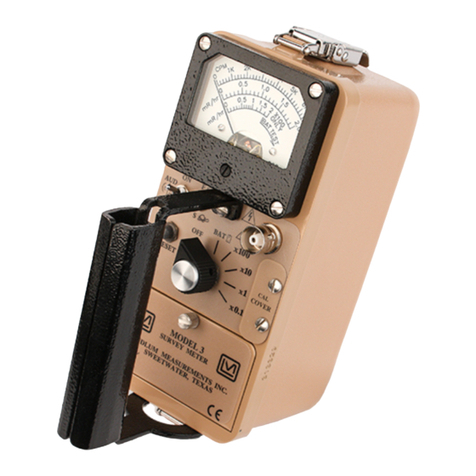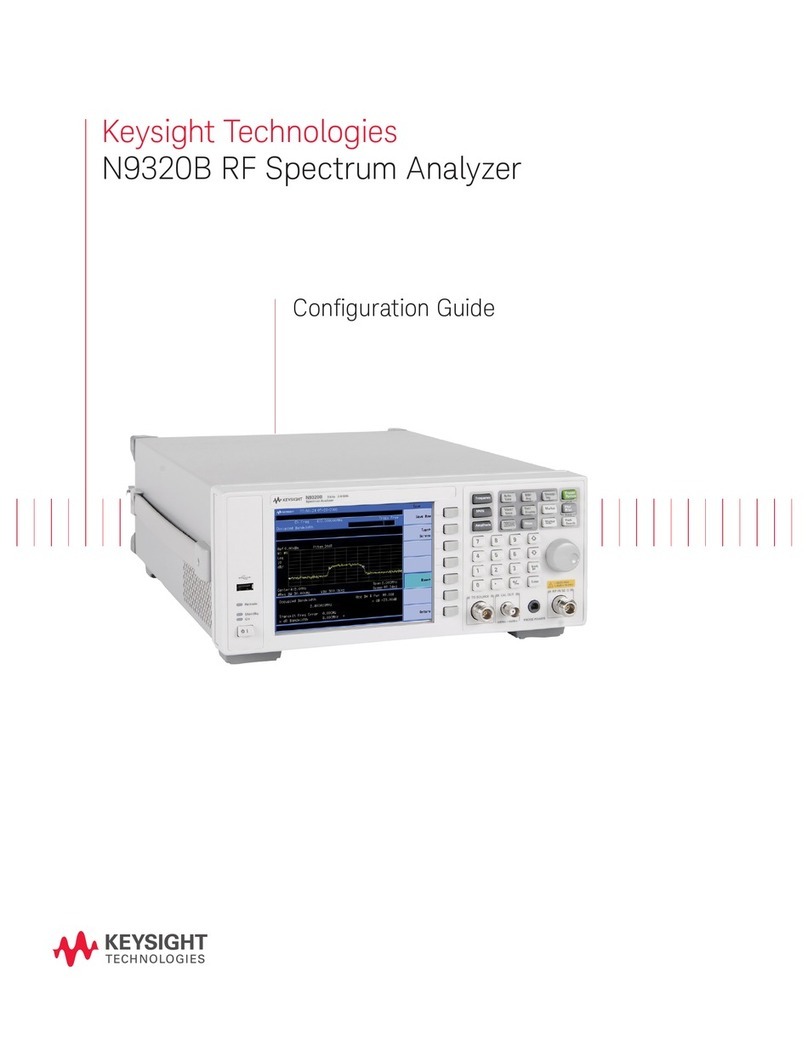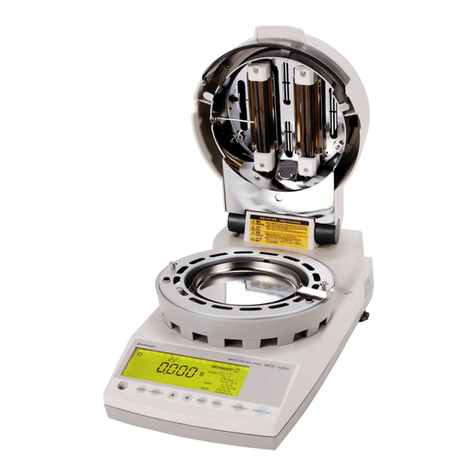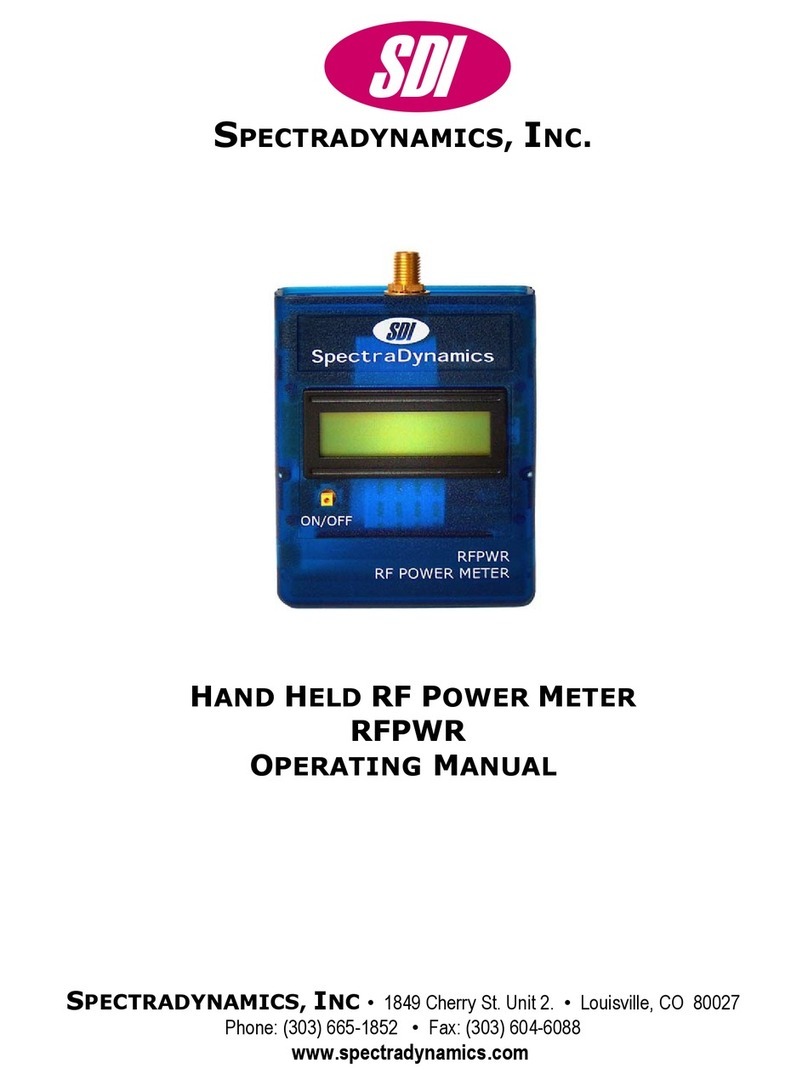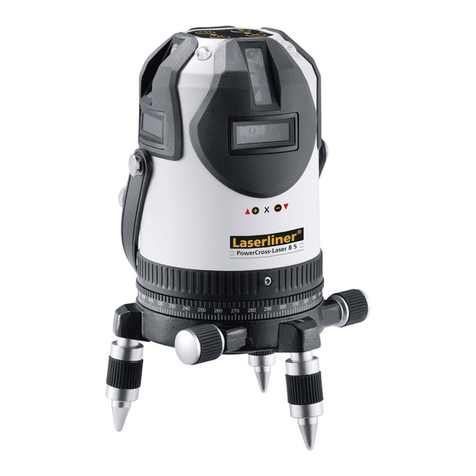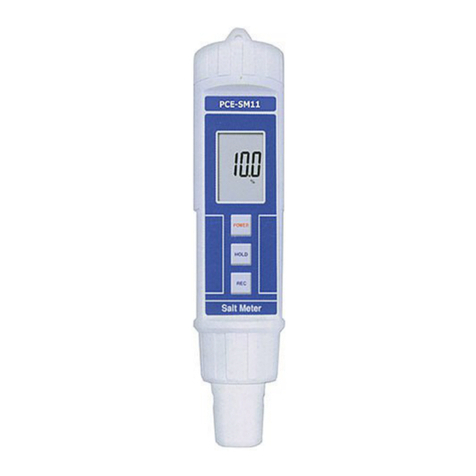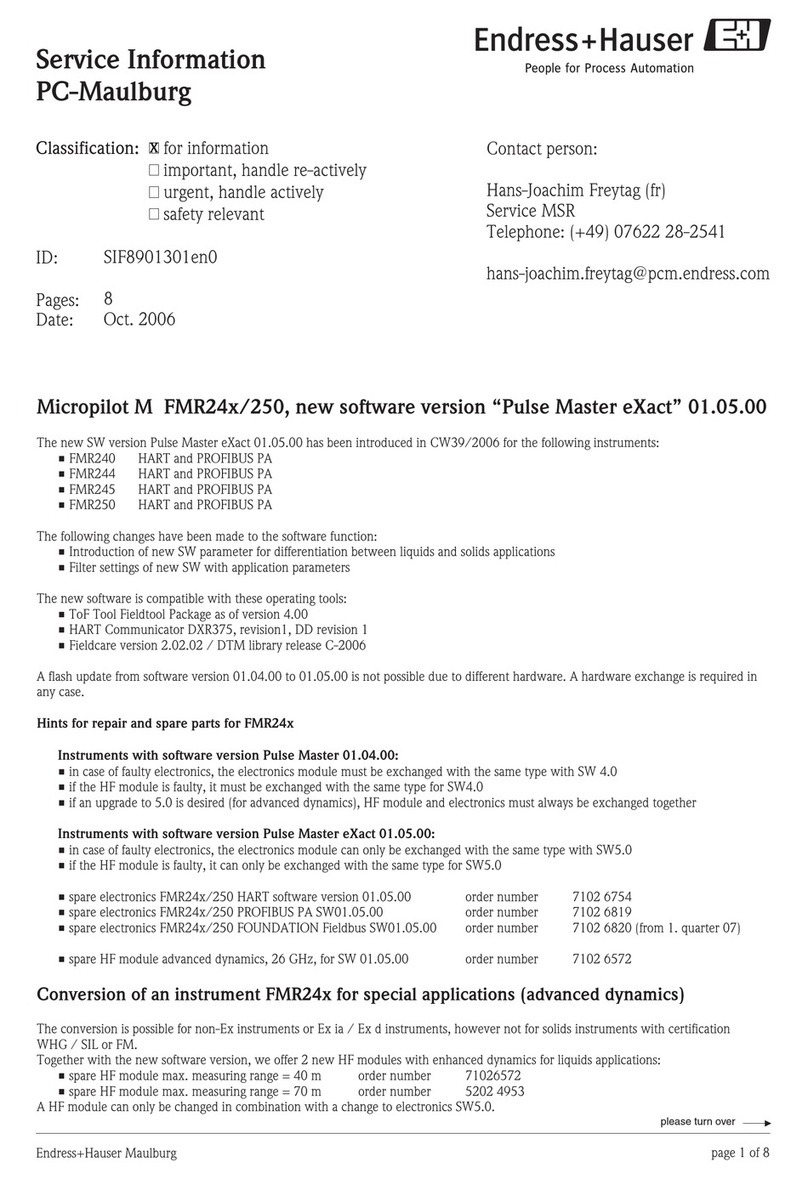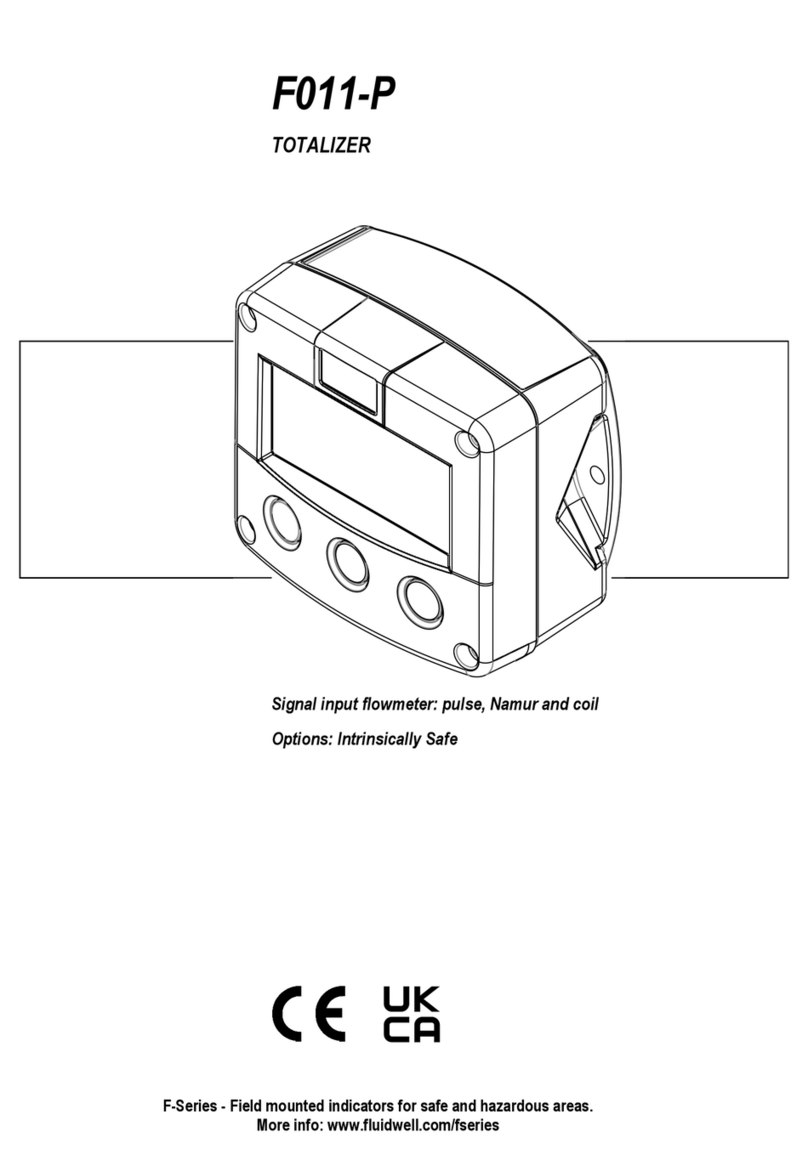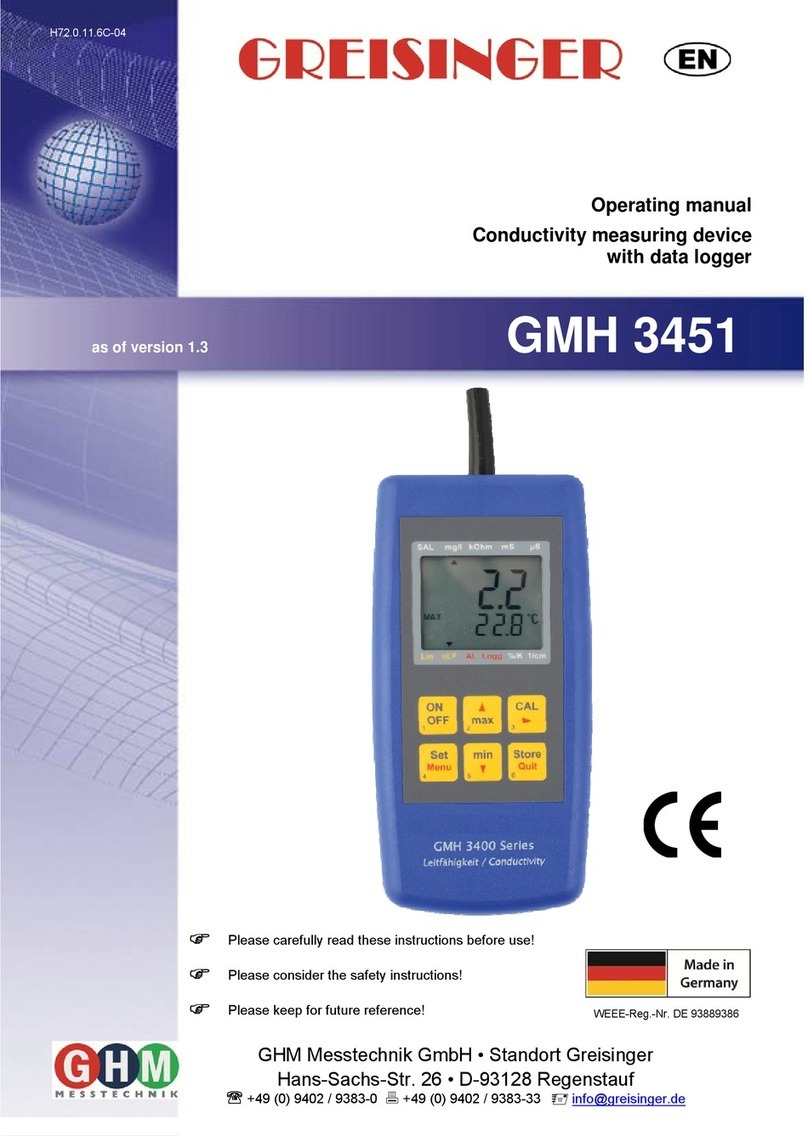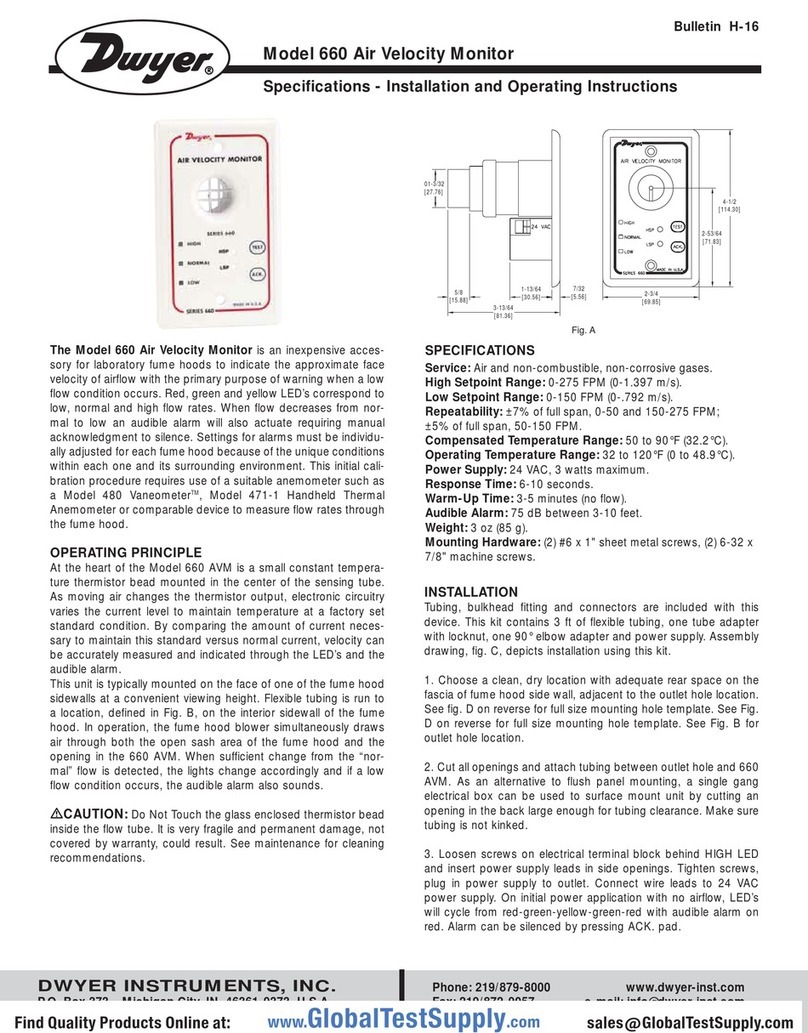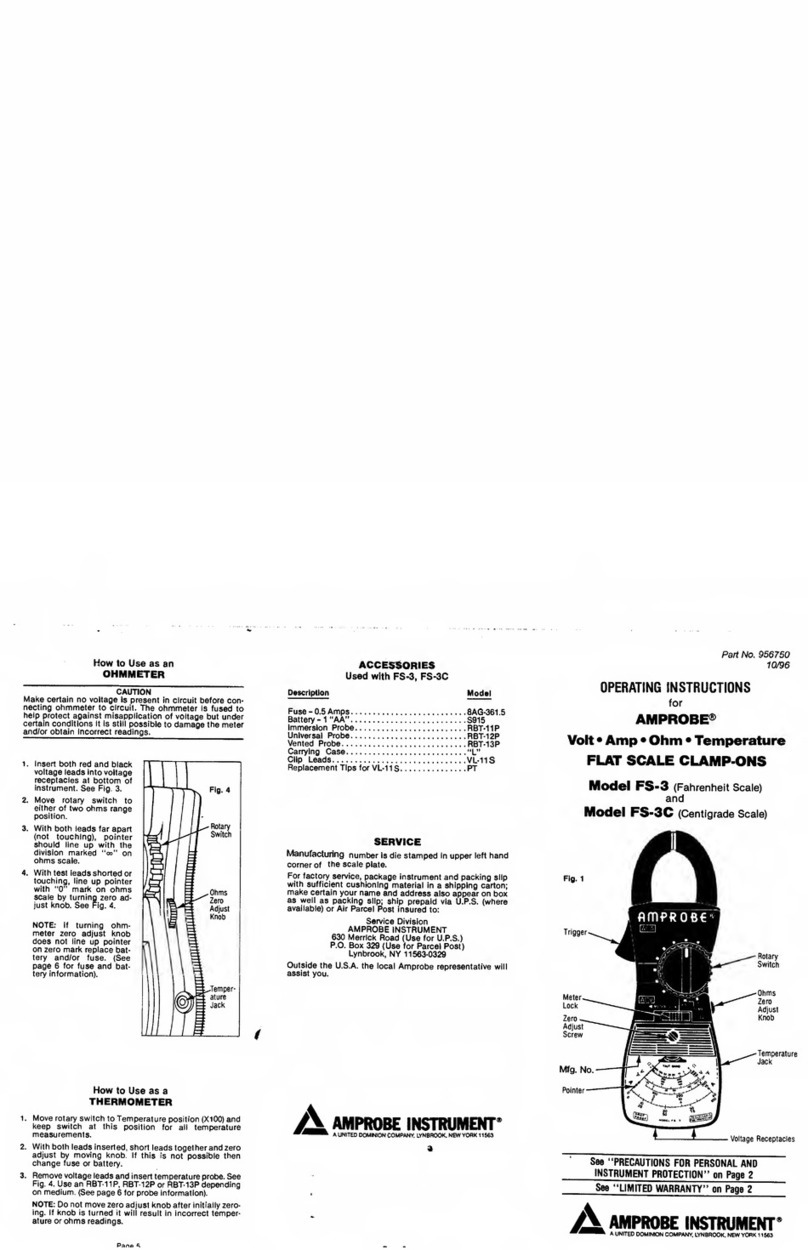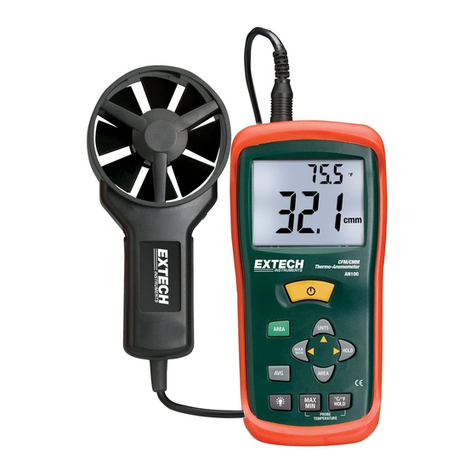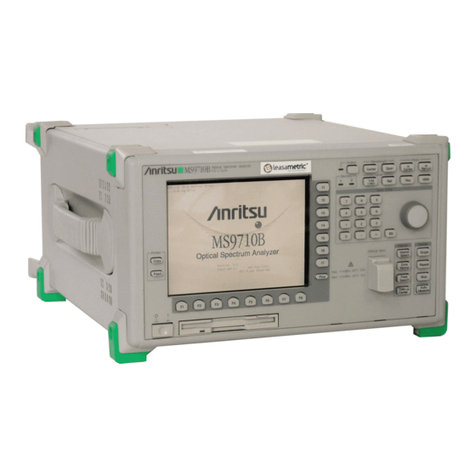
UV-3 SERIES SPECTROPHOTOMETER
Whenever it is likely that the protection has been impaired, the apparatus shall
be made inoperative and be secured against any unintended operation.
NEVER touch or handle the power supply on ChromTech UV-3 SERIES due to
the high voltage.
The protection is likely to be impaired if, for example, the apparatus
Shows visible damage
Fails to perform the intended measurements
Has been subjected to prolonged storage under unfavorable conditions
Has been subjected to severe transport stresses
WorkingPrinciple:
The spectrophotometer consists of five parts: 1) Halogen or deuterium lamps
to supply the light; 2) A Monochromator to isolate the wavelength of interest
and eliminate the unwanted second order radiation; 3) A sample compartment
to accommodate the sample solution; 4) A detector to receive the transmitted
light and convert it to an electrical signal; and 5) A digital display to indicate
absorbance or transmittance. The block diagram (Fig 1) below illustrates the
relationship between these parts.
Block diagram for the Spectrophotometer
100%T
0
Light Mono- Sample Detector Display
Source chromator Compartment
Fig1-2
In your spectrophotometer, light from the lamp is focused on the entrance slit
of the monochromator where the collimating mirror directs the beam onto the
grating. The grating disperses the light beam to produce the spectrum, a
portion of which is focused on the exit slit of the monochromator by a
collimating mirror. From here the beam is passed to a sample compartment
through one of the filters, which helps to eliminate unwanted second order
radiation from the diffraction grating. Upon leaving the sample compartment,
the beam is passed to the silicon photodiode detector and causes the detector
to produce an electrical signal that is displayed on the digital display.
Unpacking Instructions:
Carefully unpack the contents and check the materials against the following
packing list to ensure that you have received everything in good condition.
Packing List
Description Quantity
Spectrophotometer .................................................. 1
Mains Lead .............................................................. 1
Cuvettes .................................................................. Set of 4, glass
............................................................ Set of 2, quartz
Dust Cover............................................................... 1
Manual..................................................................... 1
3




















